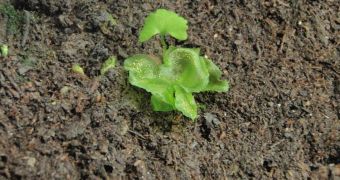Plants that grow in hot environments display a very interesting adaptation to their surroundings. Over millions of years of evolution they have learned to elongate their stems in order to cool down their leaves, ensuring that nutrients continue to flow at optimal levels.
The discovery was made by researchers at the University of Bristol, in the United Kingdom, who presented their conclusions in the May 21 issue of the esteemed scientific journal Current Biology.
Studies such as this may reveal a wealth of detail about how plants will react to global warming and climate change. This is very important for understanding how crops will change in response to rising temperature levels, since the world's food security depends on it.
Not many studies have been conducted on how plants alter their architecture in order to withstand higher temperatures. Scientists are now planning to address this lack of data in a series of researches.
Experts from the University of Bristol’s School of Biological Sciences conducted the new work under the supervision of scientists Dr. Kerry Franklin and Professor Alistair Hetherington. Their work was focused on studying the small flowering plant called thale cress (Arabidopsis thaliana).
“Temperature and water availability are major factors affecting plant yield. Understanding the relationship between temperature, plant architecture and water use is therefore essential for maximizing future crop production and ensuring food security in a changing climate,” Franklin explains.
Another interesting adaptation the team discovered was that higher temperatures made plants develop fewer pores on their leaves – structures called stomata. However, in many cases, this is not enough to reduce evaporation to low enough levels to make a difference in the long run.
The cooling process may be enhanced by the fact that leaves are spaced farther apart from each other, which may enable stomata to diffuse more water vapors, Franklin adds. The new study was sponsored by the Biotechnology and Biological Sciences Research Council (BBSRC).

 14 DAY TRIAL //
14 DAY TRIAL //